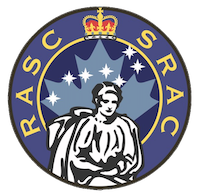By 1863, the wires from the Montreal Telegraph office had been laid into the Observatory to connect it with the principal places in the United States because the President of Grand Trunk Railway had proposed that there be an observatory in Montreal, and that the University might offer a ‘sight’. All the American railways were recommending astronomical observatories to provide reliable time-keeping. Dr. Clement Henry McLeod, or “Bunty” had already started working in the Observatory while he was an undergrad Engineer and he had been allowed to room in the McGill College Building beside the observatory so he could take observations at the required times.
This 7-foot telescope was used by Dr. McLeod to take daily measurement of astronomical readings lined up with the North Star. As Supervisor of the Observatory, Dr. McLeod calculated McGill’s longitude relative to the continental reference point at Harvard College. In 1892, while working on a follow-up reading relative to the zero meridian at Greenwich, England, McLeod revised the longitude figure for Harvard. As a result, McLeod was responsible for more accurately positioning every city, town, hamlet and farm in North America. In his honour, a plaque made from the housing of this telescope is mounted on the Radar Station at Ste. Anne-de-Bellevue and reads “Henry McLeod, B.A. Sc., F.R.S.C. THE NATION’S TIMEKEEPER”.
In the late 1800s, the Canadian Meteorological service started a ‘new’ comprehensive system of observing the weather and reporting it by telegraph to a central forecast office in Ottawa. In 1874 the McGill Observatory became “chief station” in the new network connected directly to the telegraph system so observations could be reported without delay every 3 hours. Thus, the timekeeping grew out of the astronomical observations. All of Canada set their watches by McGill’s time for many years and the railways were still using the signal in the 1960s.
In 1882, McLeod was one of the observers in an international effort to watch and record the transit of Venus. By observing (from various locations) the rare event of Venus passing in front of the sun, it was an opportunity to get a better estimate of the size of the solar system. McLeod went to Winnipeg to observe the event, while another observer at McGill also attempted observations but there were some problems with clouds over Montreal and the readings were not accurate enough. In 1886, McLeod and Howard Barnes (Macdonald Professor of Physics) measured the temperature differences between the observatory and the top of Mount Royal. They found changes in temperature at the Observatory that were anticipated by corresponding changes at the top of the mountain, varying from 4-24 hours. This work was ahead of its time, detecting the passage of cold-fronts and warm-fronts before such things had been discovered or conceived. In 1889 he was made Fellow of the Royal Society of Canada (RSC) and his work was published in the Transactions of the RSC. McLeod died on December 26th, 1917. His legacy was that he made McGill a centre for research in meteorology and geodesy for over 60 years.
Professor C.H. McLeod, of McGill College, Montreal, a well-known Canadian Astronomer, was elected a Corresponding Member of the Astronomical and Physical Society of Toronto on 1894-01-09. In response he wrote, "Please convey to the Society my sincere thanks for the offer to place me on its list of Corresponding Members. I need not say that I appreciate the compliment highly, and shall be glad to accept the position. The knowledge that the nomination comes at the instance of your President, Mr. Carpmael, with whom, I have, for many years, had such pleasant relations and for whose great ability I have the highest respect, very much enhances my pleasure in accepting." His membership was afterwards transferred to be Honorary Fellow.
Surname:
McLeod
Title/Given Name:
Dr. Clement Henry
Nation(s):
Canada
Start:
1894
End:
1917

